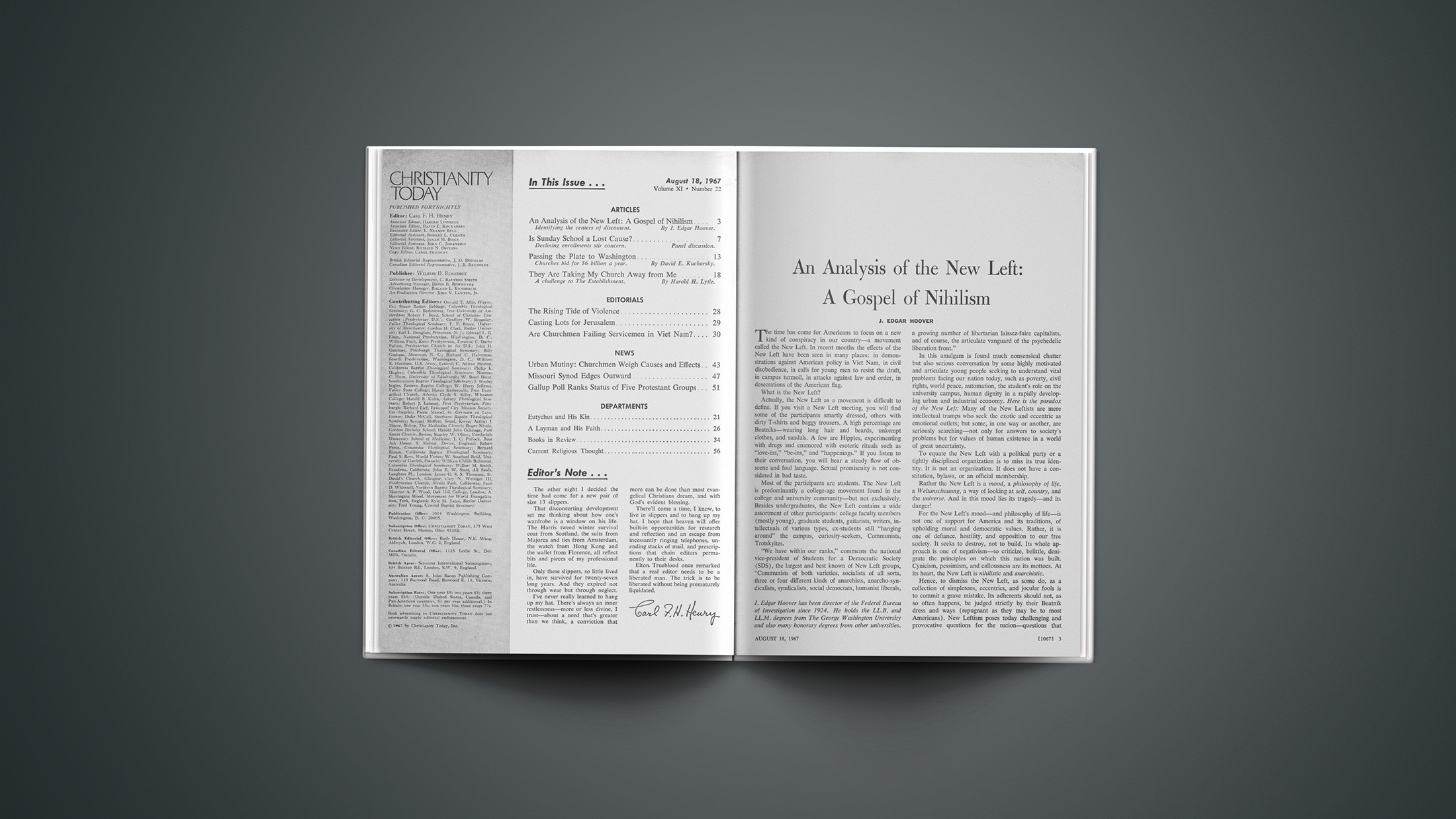
As North and South clashed in the Civil War, Americans saw hope in one direction: West. This mural study was commissioned during the Civil War for the House Wing of the U. S. Capitol to reflect the country's optimism. (The mural itself, modified slightly from the original, was finished a year later.) The painter, Emanuel Gottlieb Leutze, described his intention: "To represent as near and truthfully as the artist was able the grand peaceful conquest of the great West."
A sense of God's providential will—America's "manifest destiny"—infuses the painting. In his notes, Leutze described the emigrants catching their first view of the "'promised land' … having passed the troubles of the plains, 'The valley of darkness' &c." Of the woman near the center of the composition, he wrote that she "has folded her hands thanking for escape from dangers past (religious feeling indicated)."
The western "conquest" Leutze noted was not always peaceful, which is hinted in the painting's top border, where Indians flee the descending eagle. An official, though incomplete, Army compilation shows 1,065 engagements between U. S. troops (and occasionally civilians) and Native Americans between 1866 and 1891.
The struggling wagon toward the back of the picture is a more accurate depiction of westward travel than the jubilant faces toward the top. The most challenging of early overland routes, the Oregon Trail, covered 2,000 miles of barren plain and steep mountains and required 150 to 180 days to traverse. Traffic along the route didn't really begin until the 1836 party that included missionaries Narcissa Whitman and Eliza Spaulding (the first white women to cross the Rockies) demonstrated the trip was feasible.
Just ahead of the wagon train, beneath a shaded cross on the rock, a small group of pioneers buries one of their company. Overland travel was dangerous, as was life in the early West, where medicine and hospitals were in short supply.
Missionary Mary Walker, who went with her husband to Oregon in the 1840s, worried about her newborn son: "What is to become of him? His parents one or both may soon be taken away, and then who will care for my child? I hope I can, with some degree of faith and confidence, commit him to the care of his Maker."
Next to the wounded boy at the bottom is a woman who "hopes to meet the father of her child, who has preceded them." At least until rail travel and established roads made the trip easier, men outnumbered women in the West by a wide margin—eight to one in Idaho and Montana in 1870. When Wyoming became the first state to grant women's suffrage, in 1869, only about 1,000 white women over the age of 10 lived there. "Wyoming gave women the right to vote," a writer for Harper's Weekly quipped, "in much the same spirit that New York or Pennsylvania might vote to enfranchise angels or Martians."
The portraits in the lower margin represent two phases of America's westward expansion. Daniel Boone (1734-1820), at left, was already a legend for his explorations in and around Kentucky. William Clark (1770-1838), at right, had traveled with Meriwether Lewis from 1803 to 1806 to map the land acquired in the Louisiana Purchase.
The main part of the lower margin, a panorama of the "Golden Gate," or entrance to San Francisco's harbor, is tied to the painting's manifest destiny theme and its title, found in the banner at the very top. The title comes from the final stanza of a poem by Bishop George Berkeley :
Westward the course of Empire takes its way
The first four acts already past.
A fifth shall close the drama with the day
Time's noblest offspring is the last.
"The drama of the Pacific Ocean closes our Emigration to the west," Leutze wrote. (The poem also prompted the University of California to name its town Berkeley.)
Related Links:
See the painting and read more commentary here: www.davidson.edu/academic/english/oldenglish/steiner3.html
Copyright © 2000 by the author or Christianity Today/Christian History magazine. Click here for reprint information on Christian History.











